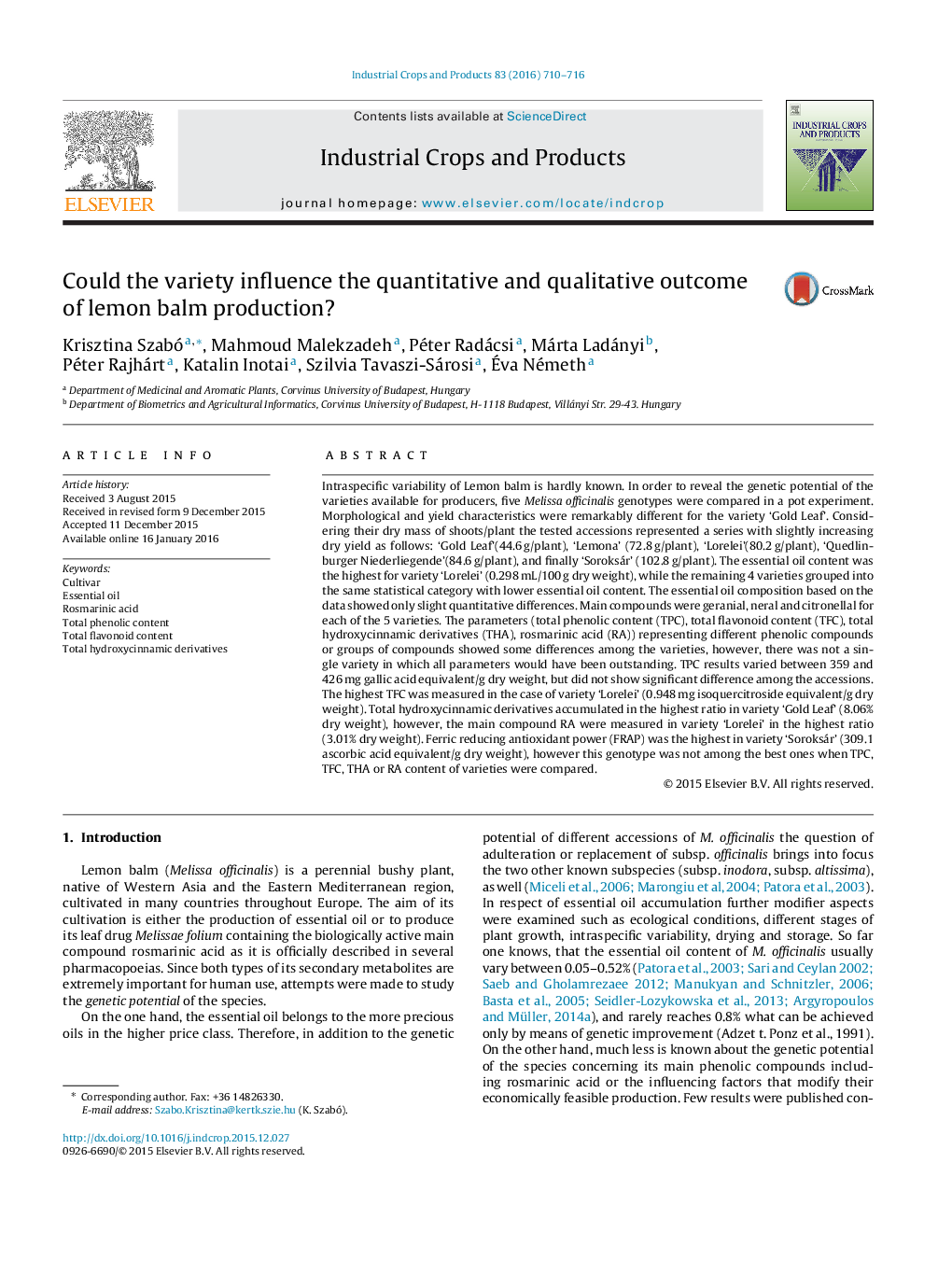| Article ID | Journal | Published Year | Pages | File Type |
|---|---|---|---|---|
| 4512321 | Industrial Crops and Products | 2016 | 7 Pages |
•The cultivars have different potential for drug production.•Essential oil contents of the genotypes varied considerably.•Neral, geranial and citronellal were the main compounds of the essential oils.•Rosmarinic acid contents of varieties meet the requirement of EU-pharmacopoeia.
Intraspecific variability of Lemon balm is hardly known. In order to reveal the genetic potential of the varieties available for producers, five Melissa officinalis genotypes were compared in a pot experiment. Morphological and yield characteristics were remarkably different for the variety ‘Gold Leaf’. Considering their dry mass of shoots/plant the tested accessions represented a series with slightly increasing dry yield as follows: ‘Gold Leaf’(44.6 g/plant), ‘Lemona’ (72.8 g/plant), ‘Lorelei’(80.2 g/plant), ‘Quedlinburger Niederliegende’(84.6 g/plant), and finally ‘Soroksár’ (102.8 g/plant). The essential oil content was the highest for variety ‘Lorelei’ (0.298 mL/100 g dry weight), while the remaining 4 varieties grouped into the same statistical category with lower essential oil content. The essential oil composition based on the data showed only slight quantitative differences. Main compounds were geranial, neral and citronellal for each of the 5 varieties. The parameters (total phenolic content (TPC), total flavonoid content (TFC), total hydroxycinnamic derivatives (THA), rosmarinic acid (RA)) representing different phenolic compounds or groups of compounds showed some differences among the varieties, however, there was not a single variety in which all parameters would have been outstanding. TPC results varied between 359 and 426 mg gallic acid equivalent/g dry weight, but did not show significant difference among the accessions. The highest TFC was measured in the case of variety ‘Lorelei’ (0.948 mg isoquercitroside equivalent/g dry weight). Total hydroxycinnamic derivatives accumulated in the highest ratio in variety ‘Gold Leaf’ (8.06% dry weight), however, the main compound RA were measured in variety ‘Lorelei’ in the highest ratio (3.01% dry weight). Ferric reducing antioxidant power (FRAP) was the highest in variety ‘Soroksár’ (309.1 ascorbic acid equivalent/g dry weight), however this genotype was not among the best ones when TPC, TFC, THA or RA content of varieties were compared.
